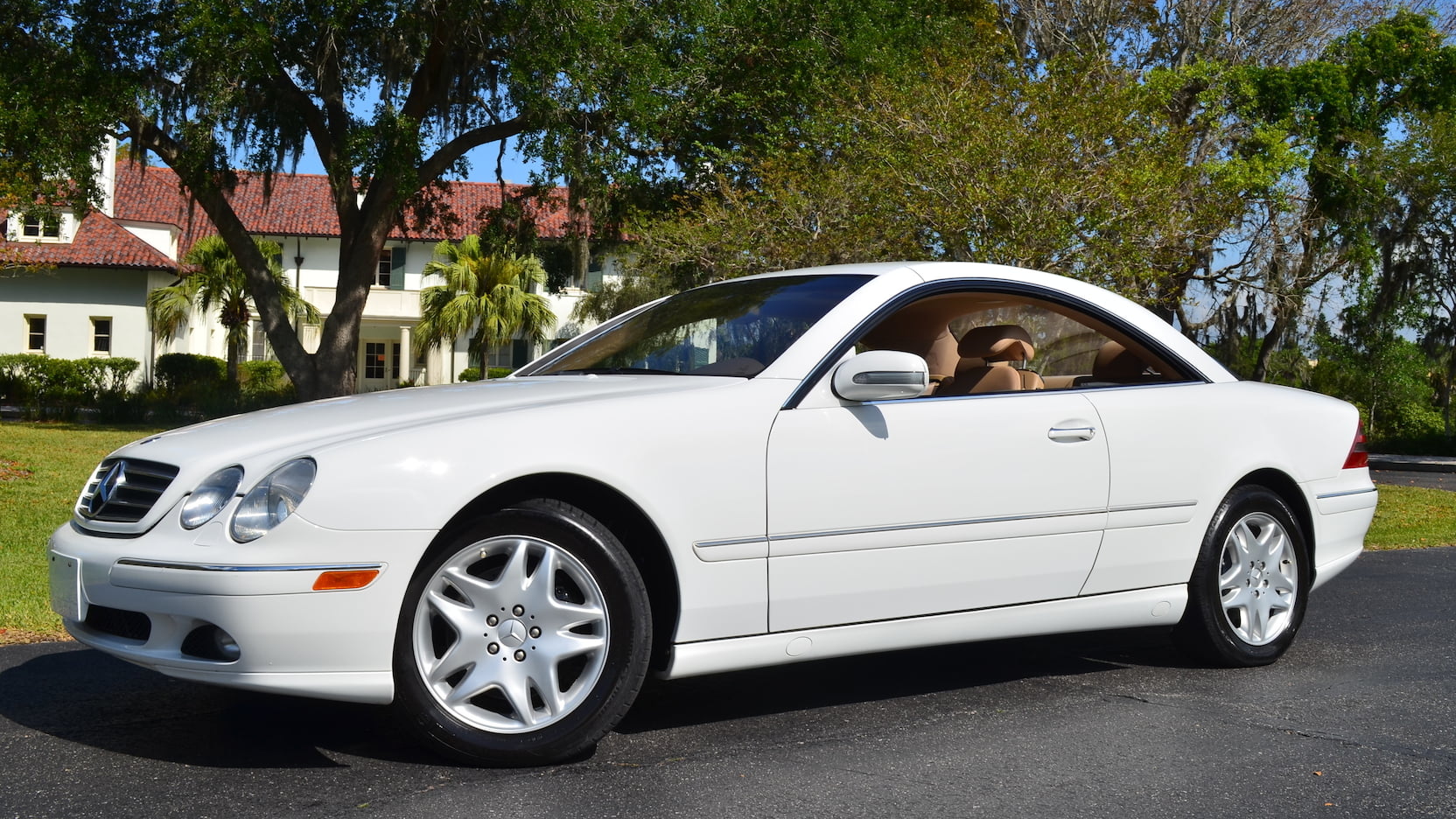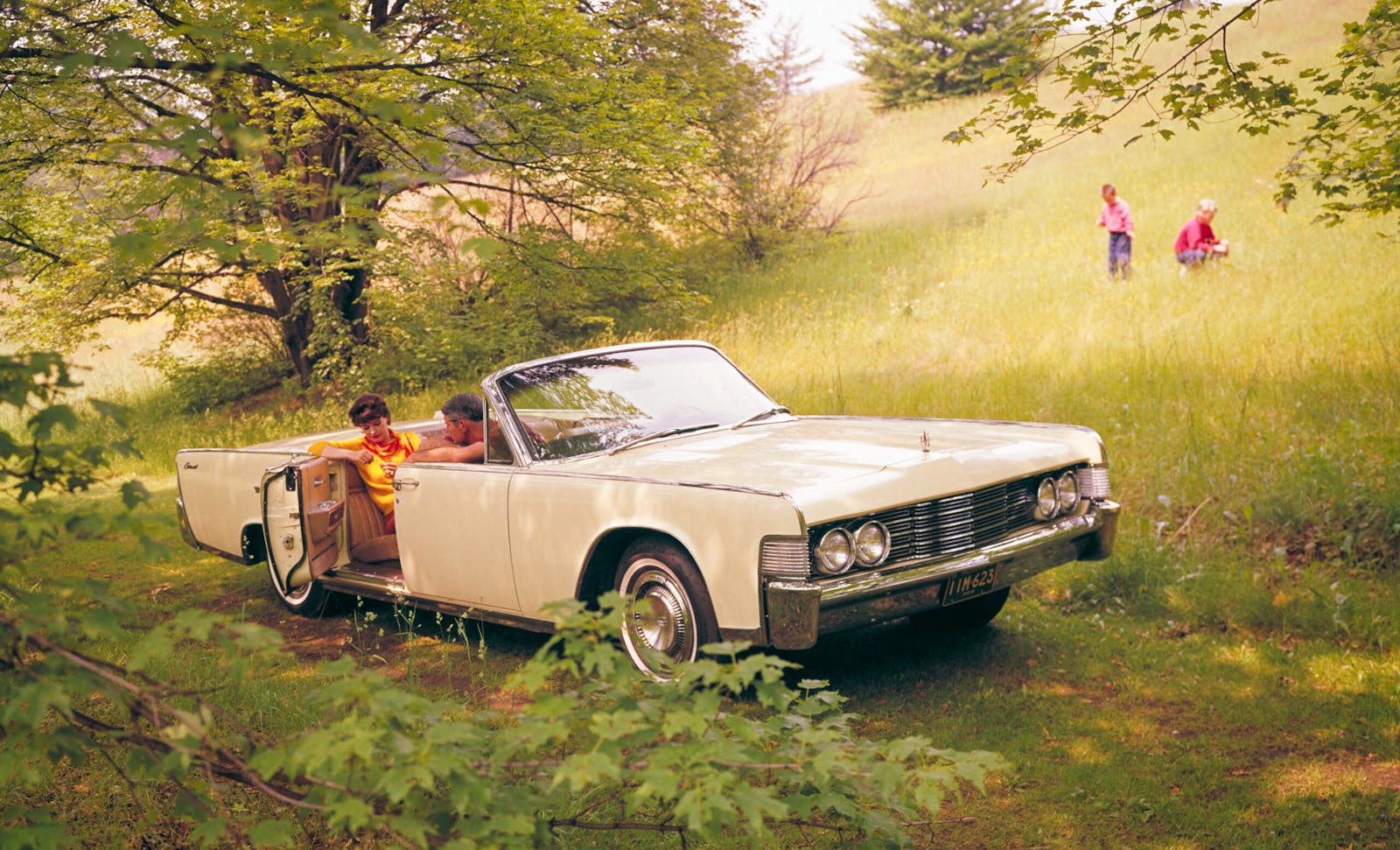Media | Articles
5 cars that are either bargain buys or money pits
After World War II and into the 1950s, cars like Duesenbergs, V-16 Cadillacs, and Pierce Arrows—the top-shelf classics for decades—were available on the used market for next to nothing. Languishing unwanted at the back of third-rate used car lots, many got scrapped because they were money pits—expensive to source parts for and difficult to keep running..
Say your V-16 Cadillac’s engine needed a rebuild. That would have required three times as many parts as a straight-six Hudson or Chevy, not to mention that part costed in some cases more than the car was worth. So off it went into oblivion.
Such low-production, high-end cars still exist, and today’s used market has several of these forgotten models that can be bought for relatively little. They’ve remained a risk is for the same reasons you could score a Senior Packard roadster for $80 way back when. Vehicles of this sort are often complex and flawed, but potentially very collectible, and could be worth the risk—as long as you can afford to keep them running.
E31-generation BMW 8 Series

Introduced as BMW’s flagship “luxury sports car” in 1989, early orders for the 8 Series 2+2 coupe took up to three years to fulfill—there was that much demand. The successor to BMW’s 635CSi, it was intended to be a halo car a notch above its predecessor. At $100,000, it was guaranteed to be limited production; a bit over 12,500 were built.
Marketplace
Buy and sell classics with confidence
With the standard V-8 or optional V-12 offered during the coupe’s eight years of production (1989–96) the 8 Series has all of the makings of an exclusive, collectible BMW supercar. That V-12 was essentially two straight-six engines glued together. Four-speed automatics and six-speed manual transmissions offered a range of driving experiences, though at two tons (and with the engine placed squarely over the front axle centerline) the E31 was no sports car. V-12 engines, being essentially two I-6s smacked together, suffered from the woeful complexity of dual ECUs, along with a module to let them communicate with one another. Don’t foget two batteries either, one for all of the gizmos and the other for starting chores. There was a phone, too.
If you’re thinking about taking the plunge, your best bet is finding one documented with service records to follow the trail of scheduled maintenance and fixes. If the automatic trans was not flushed every 30,000 miles, for instance, plan on replacing it at 75,000. A battery tender is a must, as the batteries drain when not used, wreaking havoc on the electronics—especially the engine management system. Early 840i V-8s were prone to cylinder wall pitting—look for the block labeled “alusil” as opposed to “nikasil.”
Worn suspension bushings, thermostats, hidden headlight motors, fan clutch, brake booster seals, and leaky heater cores are all common replacements as the miles and years wear on. We’ve seen low-mile examples for under $12,000, which just seems too irresistible.
First-generation Corvette ZR-1

Chevrolet’s Corvette had an even more exclusive ZR-1 model available from 1990–95. Besides the unique LT5 350-cubic-inch 375-hp engine—an overhead cam/32-valve V-8 manufactured by Mercury Marine—it boasted a wider body and set a record for 24-hour, 5000-mile land speed at over 175 mph. So not only is this collectible from an engine and production standpoint, but it has a unique body and historical significance.
The first year also featured the convex tail, which would become standard on all Corvettes the following year, somewhat diminishing the visual impact of later ZR-1s. Upgraded brakes and steering, a wider power band than L-98-powered Corvettes, and adjustable active ride control offering different suspension settings for track tuning all distinguished the ZR-1 from pedestrian Corvettes. The aluminum LT5 featured a unique “two-phase” induction system for both efficient around town cruising or hammer-down track action. The unique ML9 six-speed transmission had “Computer Aided Gear Selection” (CAGS) which would short shift from first to fourth gear for around town nimbleness.
Engine mods in 1993 upped horsepower to 405, which was good because the new LT1 small-block was nipping at the LT5’s heels with 300 hp and 340 lb-ft torque. Combined with its overall lighter weight this was comparable to the ZR-1’s performance. The heavier, more complicated ZR-1 was already finding fewer buyers and reasons to exist, with production numbers steadily falling from a peak of 3049 its first year to a mere 448 a year from 1993–95.
Both the LT5 engines and transmissions are very durable, so problems associated with the ZR-1 are common to all C4 Corvettes. The 1990 LT5s do not have valve guide seals, so oil consumption is slightly raised from that of later ZR-1s but is not harmful. Chain tensioners should be inspected, with a rattle on start up an indication of attention. Excessive carbon buildup is best corrected with occasional high-speed blasts.
Hiding in plain sight, these should be distinguishing themselves from their standard brethren as interest in C4 Corvettes gains over the years, so now would be an excellent time to consider one of the most unique and rare production Corvettes that Chevy made.
Mercedes 450SEL 6.9 Sedan

Almost indistinguishable from standard S-Class Mercedes sedans, the 1977–79 450SEL 6.9 long-wheelbase was, underneath, way over the top. The 250-hp V-8 sedan was built in 1975–81 in Europe, with 1816 imported into the US for 1977–79. Exclusivity and engineering justified expense at $44,000—increasing to $52,000 in 1979, placing the 6.9 in the rarified air of Rolls-Royce pricing. It was almost twice the price of a standard 450 SEL.
Supposedly the factory was reluctant to import these to the U.S. partially because it couldn’t make them fast enough for Europe. The origin of the 6.9 was the M-100 6.3-liter engine and hydraulics from the massive 600, squeezed into the 1968 300SEL. With the new W116 S-class sedan in 1977, the improved version of the M100 created the 450SEL 6.9. It’s a hearty engine, but if scheduled service was not followed there’s the possibility of cam wear and lifter damage.
A variable height hydropneumatic suspension, 12-quart dry sump oiling system, sophisticated Watts-linkage independent rear suspension, and modified three-speed automatic with beefed driveline were just some of the features exclusive to the 6.9. Slightly wider 14-inch wheels and the “6.9” emblem on the trunk are the only external clues this is a factory hand-built Mercedes.
With 0–60 times a tic over seven seconds and top speed of over 140 mph, Car and Driver magazine declared this the “Greatest Mercedes-Benz ever built!” But there are drawbacks. The suspension accumulators (three in front, one under the battery, and two under the left front fender) tend to go bad every 10–12 years when the diaphragms rupture, which can set you back $150… each. A stiff, buckboard ride or drooping to one side or all around means you’ll soon be dropping big bucks. Weeping hydraulic hoses may need to be made if you can’t find a source. Rust can be a problem, especially with so many gray-market 6.9s finding their way to our shores. Rust can form between heavy undercoating and sheet metal. Though it looks clean it could hold surprises.
“A cheap Mercedes is an expensive Mercedes” is a caveat best remembered.
CL500/CL600 Mercedes Coupes

Having read our observations on the trials and tribulations of 450 SEL 6.9 ownership, you will take notice of the similarities to Mercedes’ later stab at motoring perfection: the 1998–2006 CL500 V-8 and CL600 V-12 coupe. Beautifully styled, they still hold up well in our “angry toaster design” era of body sculpting. At close to $100,000 new (with V-12 versions hitting well over that threshold), the $5000–$10,000 price of clean, low-mileage versions today leaves one pondering the nearly $100,000 drop in less than 10 years.
Nature abhors a vacuum, however, and the CL’s cheap buy-in highlights many problems giving fair warning you’re dipping into sketchy waters. By far, the main problem is with the Active Body Control (ABC) hydraulic-levelling suspension. Plastic lines are subject to failing—sometimes while on the road, other times during slumber in the garage. Special fluid runs through a pump which doubles as the power steering pump. So far so good. Still, the minutest amount of dirt in a control valve or other locations can render the pump inoperative, compounding repairs. Flushing the system every 35,000 miles is mandatory, which still won’t help if a line or an accumulator decides to give out.
There is plenty of help online; this was so common in the CLs there really should have been a massive recall. There are also coil-over shock conversions which also defeat the computer detecting ABC activity. Most Benz faithful frown on this conversion. With CL600 V-12s, there’s more to go wrong. Ignition coil packs or ignition module failures are common. Cracked driveshaft flex discs can cause excessive vibrations. Oil intercooler leaks, which means you need to remove the heads, is another common and complex repair. Other mundane failures like an alternator can set you back over $1000 just for the part. Hydraulic motor mounts, steering dampers, torque strut and control arm bushings—these minor failures and more can cost a lot even if you do the repairs yourself.
Until a few years ago, new and used dealer-purchased coupes saved their owners hyper-expensive repair bills with Mercedes-backed warranties, but that crutch is long gone.
2005–08 Maserati Quattroporte Sedans

An affordable Maserati penned by the famous Pininfarina design house should be on everyone’s list of future classics. Some consider it a Ferrari with four doors. Compared to the original out-the-door price of over $125,000, decent survivors can be purchased for $10,000–$30,000.
The proportions of the 120.6-inch wheelbase alone announce the engine setback for superb weight distribution. The 394-hp overhead cam 4.2-liter V-8 is shifted by the Duoselect sequential manual computer/hydraulic controlled transmission with column paddle shifting. Prior to 2007 all Masers came with the Duoselect—a transaxle setup from the Ferrari F430 Modena. With no torque converter the clutch can go south after 20,000–30,000 miles causing a multitude of problems.
From 2007 on, the Automatica ZF six-speed automatic cured the Quattroporte’s ills—Maserati reengineered almost the entire car for this more conventional configuration. The “Sport GT” version comes with 20-inch wheels, carbon-fiber trim bits, and modified Skyhook adaptive suspension and exhaust.
Cam variators are another problem. Lubricated by oil pressure they need a constant 2700 rpm to function properly. At idle it’s not a problem because there is no engine load. But Duoselect cars run at lower rpm as controlled by the computer, and this can cause variator failure, spitting out “misfire” codes. Replacement of the variators and solenoids can run close to $8000. TPMS sensors also seem to be an area of malfunction necessitating replacement, although not a huge problem cost-wise. Engine vibrations are mostly isolated to worn engine mounts. No preselects for the radio and no spare tire are other complaints we’ve seen. Still, for all of its Italian quirks it’s tempting to take the plunge.

